Pacific Countries Adopt Digital Tool for COVID-19 Surveillance and Outbreak Data Management
Pacific countries are among the most successful in the world at keeping out or delaying importing COVID-19 into the region. Working in close partnership with the Pacific Joint Incident Management Team for COVID-19 the region’s leaders have come together to commit to protect their population by taking decisive actions early in the pandemic.
As early as February 2020, Pacific countries and territories implemented border control interventions at key ports of entry to delay the importation of COVID-19. This allowed countries to stall for time and to put into place national containment and mitigation measures, including strengthening their COVID-19 surveillance and outbreak management response. The collection and use of data is presented as a key strategy in response to the COVID-19 and the pandemic has triggered a rapid rollout of digital public health technologies.
Traditionally in the Pacific, surveillance and outbreak response tools used to detect, assess and respond to acute public health events such as COVID-19 have been manual paper-based systems. Transmission models suggest that contact tracing must be highly effective (i.e. more than 70% of contacts traced) and leverage technology to facilitate instant contact notification to contain the epidemic.
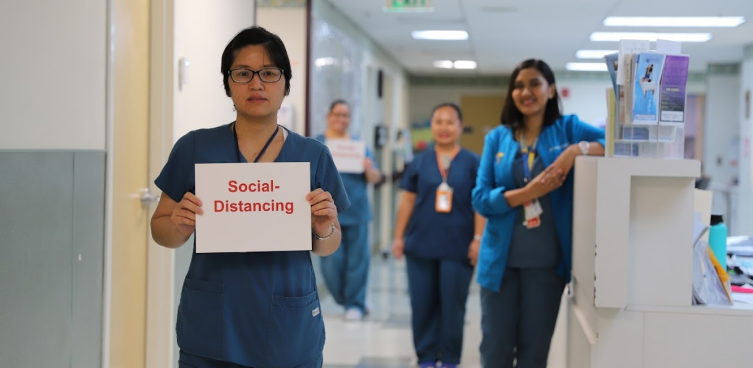
Several countries have been introducing, piloting and planning the use of digital tools to enhance and speed-up case investigation and contract tracing processes.
Since March 2020, Fiji has employed an active surveillance and contact tracing system called SORMAS. Fiji was one of the last countries in the world to report its first case, yet was one of the first to implement an integrated multi-communicable disease event-based and contact tracing solution to detect early public health events requiring rapid investigation and response. Fiji also implemented a proximity tracking tool called CareFiji in June 2020 to digitally augment the country’s contact tracing efforts to continuously to detect and record close proximity of individuals through the use of personal mobile devices. Also the Cook Islands and Guam have launched similar proximity tracing tools to support traditional contact tracing.
Papua New Guinea (PNG), French Polynesia, the Cook Islands, New Caledonia, Palau and the FSM have been using or piloting Go.data, a case and contact data management tool, to digitally optimize processes to support contact tracing demands and to ensure that data flows appropriately to inform public health measures.
Guam, the Marshall Islands, Palau and the CNMI implemented and expanded the use of a symptom self-reporting tool called Sara Alert to allow public health officials to monitor the health status of quarantined individuals.
Today, because of the pandemic, several Pacific countries and territories have not only added more tools to their digital surveillance toolbox, but also made improvements to well established national syndromic surveillance systems such as the Early Warning Alert and Response System (EWARS)
from WHO.
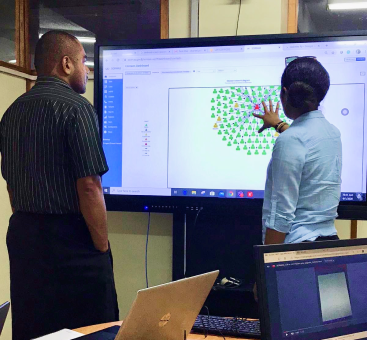
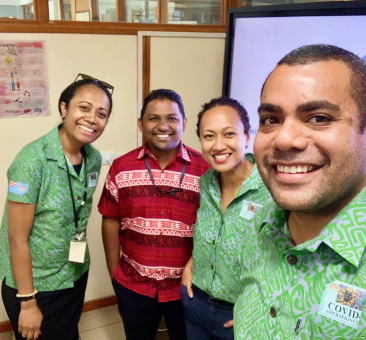
Ministry of Health & Medical Services, Fiji
However, no single technological solution covers all functions required for case investigation and contact tracing. Taking full advantage of technological options may require layering and linking multiple technologies across the case investigation and contact tracing workflows. Integrating these tools into the public health infrastructure will require careful thinking about operational issues, privacy and consent, and stakeholder engagement. At the country level, it is crucial to ensure the interoperability of such digital systems and enable efficient, harmonized, secure and sustainable cross-national data sharing to optimize the COVID-19 response.
PARTNERS
PROJECT TYPE
LOCATION
SHARE
RELATED RESOURCES
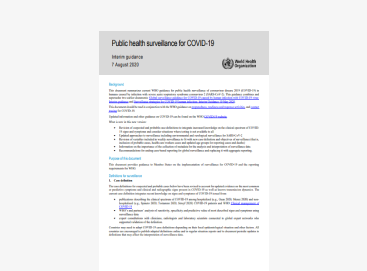
MATERIAL JUNE 2020
WHO: Public health surveillance for COVID-19: interim guidance, 7 August 2020
VIEW MATERIAL

MATERIAL MAY 2020
WHO: Selecting digital contact tracing and quarantine tools for COVID-19 : guiding principles and considerations for a stepwise approach
VIEW MATERIAL
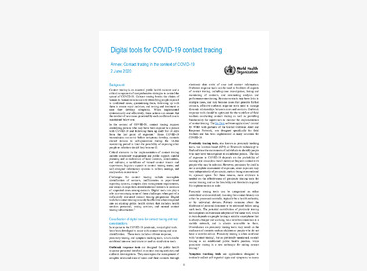
MATERIAL OCTOBER 2020
Digital tools for COVID-19 contact tracing: annex: contact tracing in the context of COVID-19, 2 June 2020
VIEW MATERIAL